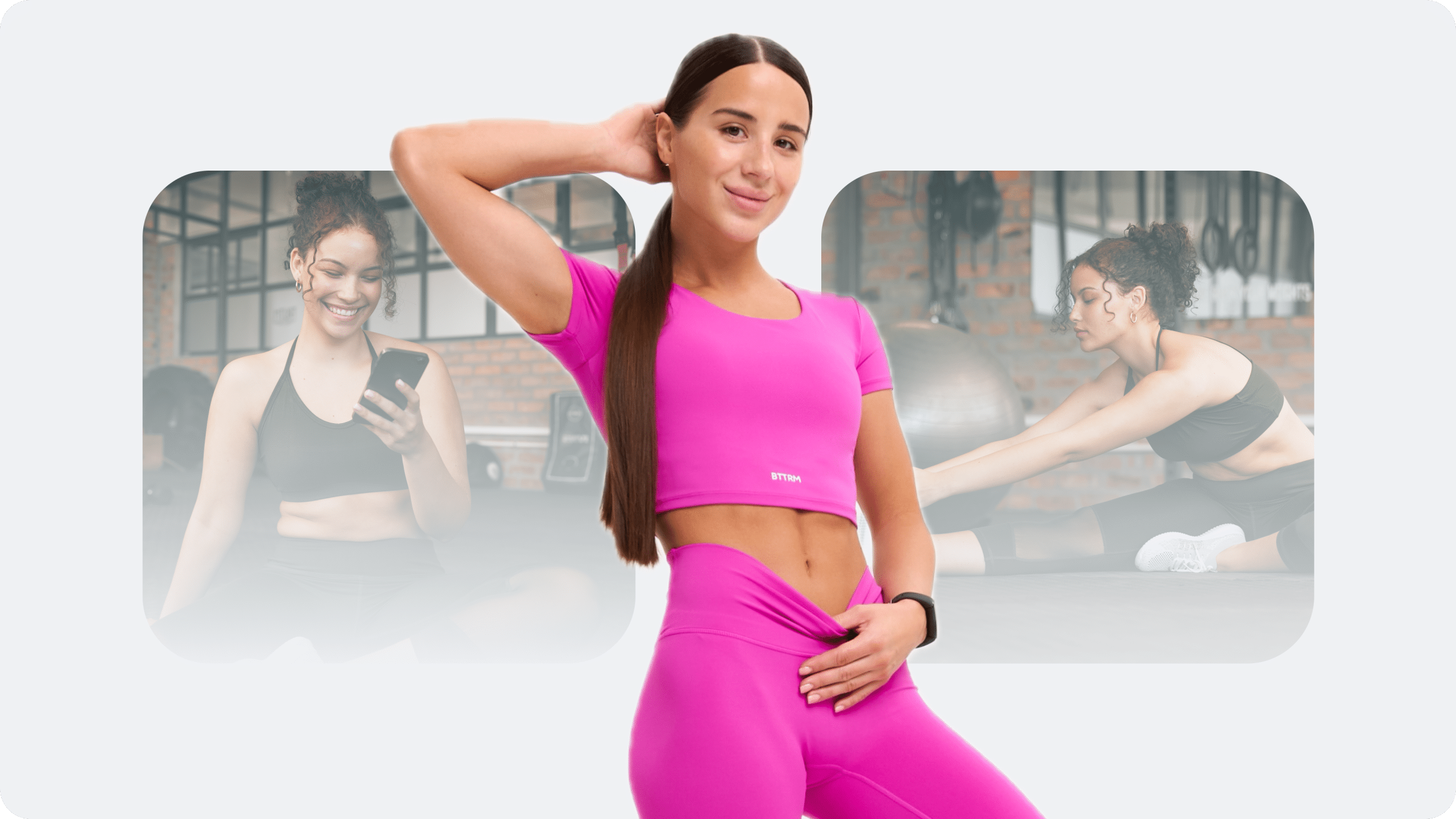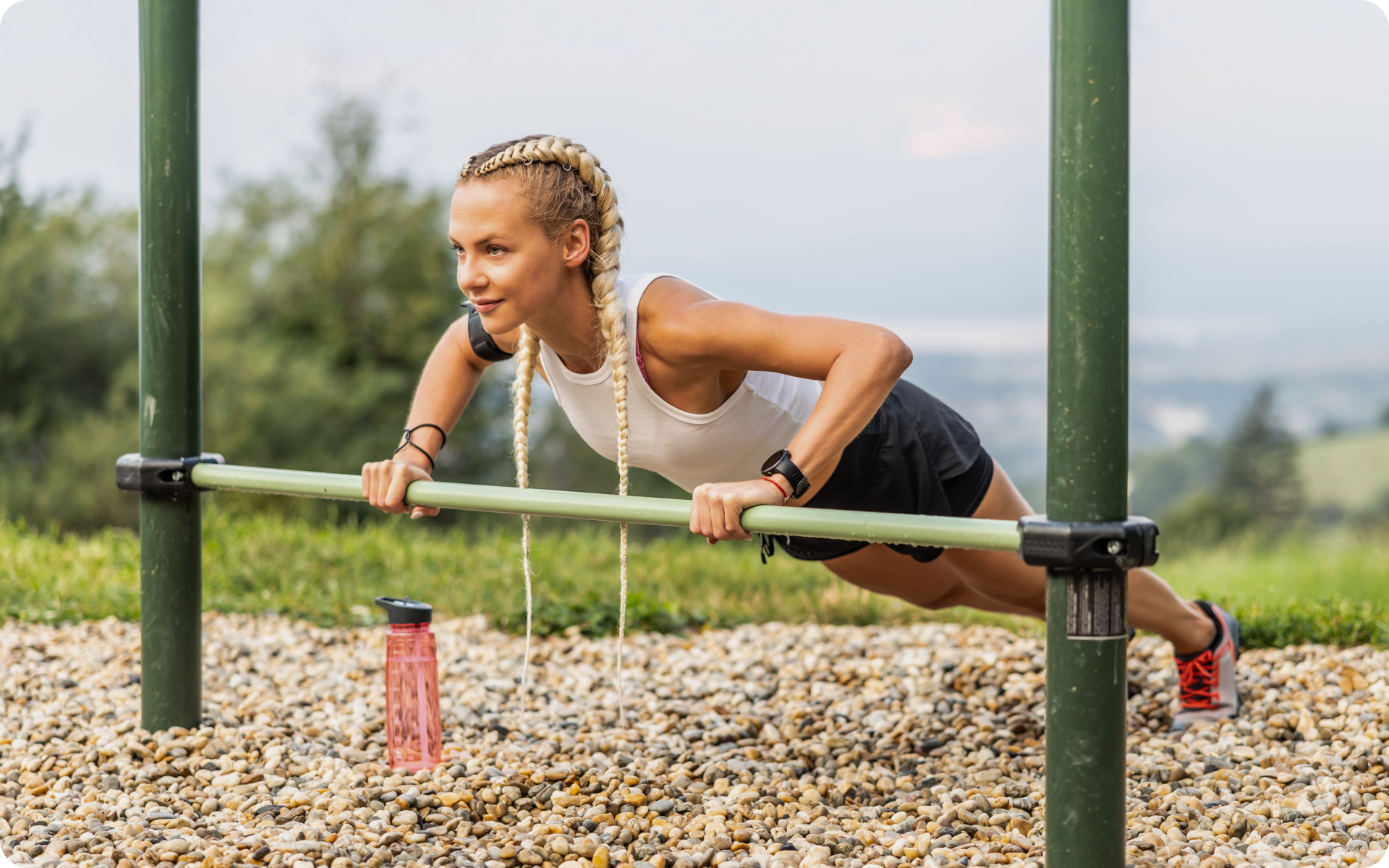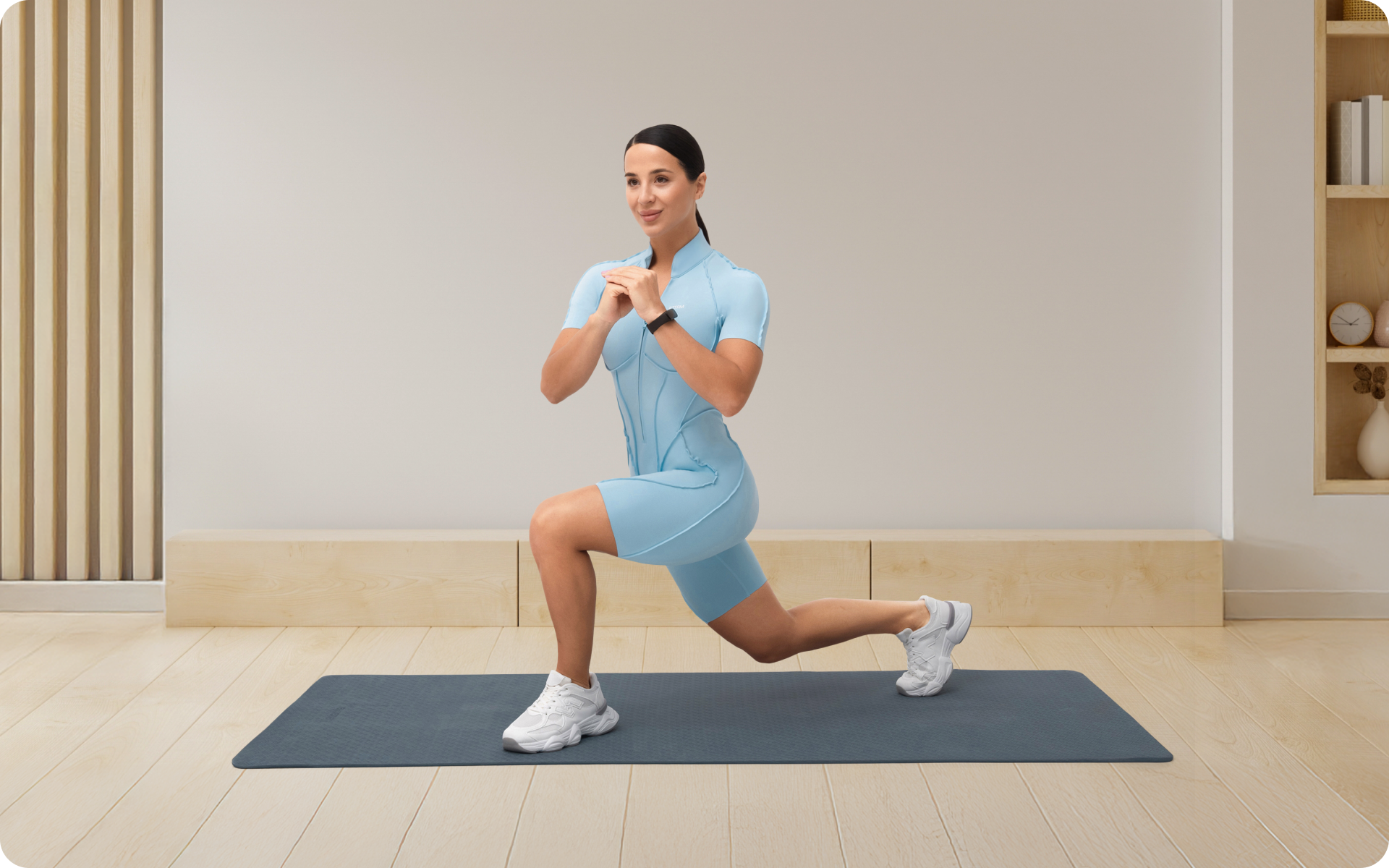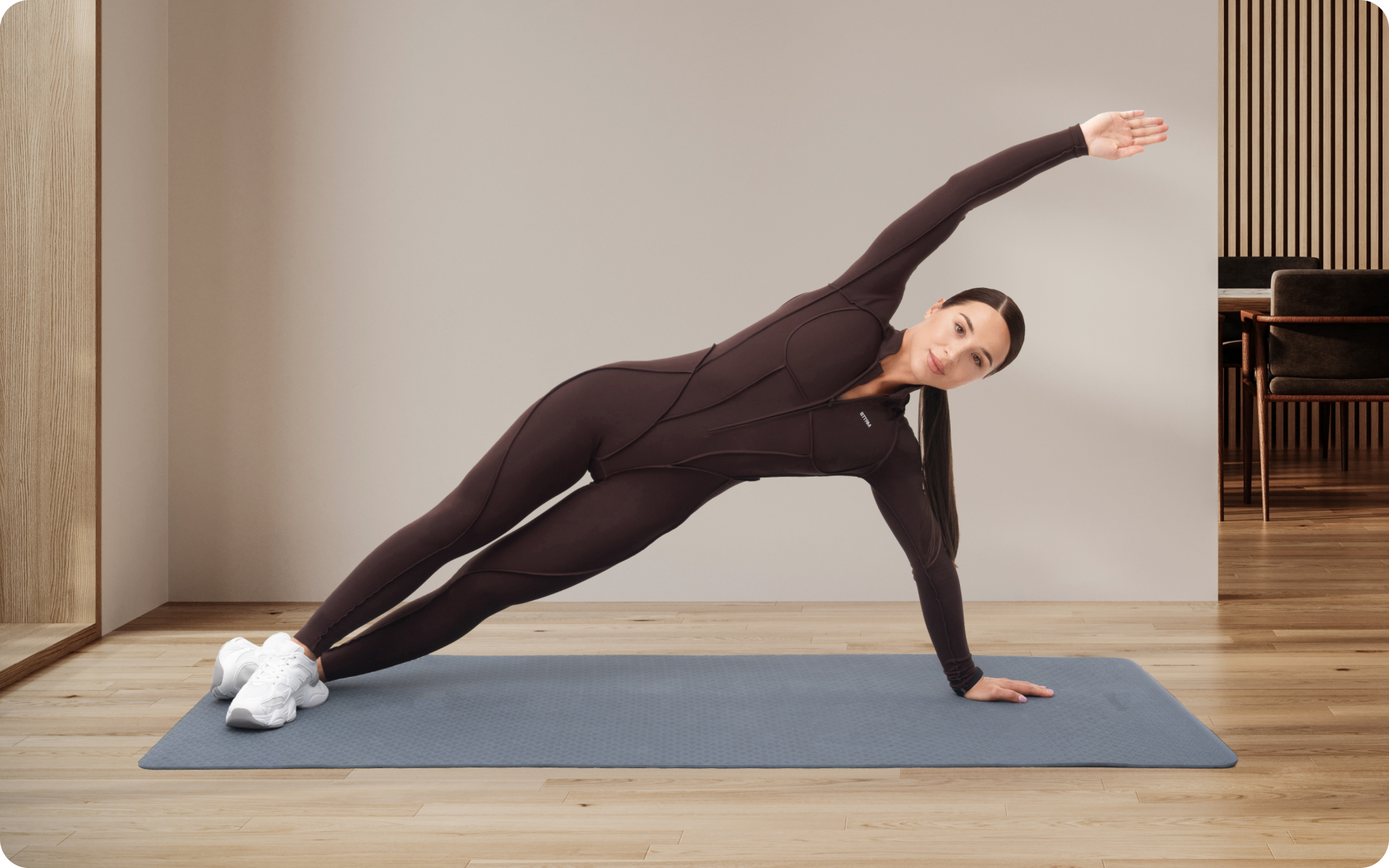You’ve noticed that you’re not pushing yourself to the limit, your body feels stiffer than a wooden plank, and those muscles just aren’t cooperating like they used to. It could be that life’s demands have kept you from your regular fitness regimen, or maybe it’s a lack of motivation.
Regardless of the reason, the truth is that your body is crying out for some much-needed stretching and flexibility training. What you need is a stretching calisthenics routine —a perfect blend of dynamic movements designed to get you loose and limber for your next workout.
Think of it as a warm hug for your muscles, a gentle awakening of every fiber, preparing them for the intensive exercise to come. With this routine, not only will you experience fewer injuries and improved performance, but you’ll also rediscover the joy of movement, the exhilaration of pushing boundaries, and the satisfaction of crushing your fitness goals.
Is Stretching Good for Calisthenics?
Stretching is not only good but also essential for calisthenics. Incorporating a comprehensive stretching calisthenics routine before, after, and even on rest days may enhance your calisthenics performance, improve flexibility, and reduce the risk of injuries (4).
Pre-Session Stretching: A Dynamic Start
Starting your calisthenics workout with dynamic stretching serves to prepare your body for the intensive exercise ahead. It can help increase your heart rate, body temperature, and blood flow to the muscles, which helps to improve muscle elasticity and joint mobility (1).
This warm-up phase is crucial, as it allows you to perform calisthenic exercises more efficiently and safely.
In addition, pre-session dynamic stretching also helps in enhancing neuromuscular coordination. By mimicking the movements of your upcoming workout, you’re essentially rehearsing the motion patterns, which can lead to improved performance during your actual training.
Reasons why BetterMe is a safe bet: a wide range of calorie-blasting workouts, finger-licking recipes, 24/7 support, challenges that’ll keep you on your best game, and that just scratches the surface! Start using our app and watch the magic happen.
Post-Session Stretching: The Cool Down Phase
After an intense calisthenics session, your muscles are often tense and contracted. Here’s where post-session stretching calisthenics at home or wherever you are comes in handy. It helps in gradually decreasing the heart rate and relaxing the muscles, which can help best support proper recovery and may also help reduce muscle soreness (7).
More importantly, post-workout stretching can help improve flexibility over time (7). When you stretch after a workout, you’re taking advantage of the fact that your muscles are already warmed up. Regular stretching can help support and maintain range of motion and further improve flexibility, it’s important to prioritize proper technique and not push beyond your limits.
Stretching on Rest Days: Continuous Improvement
Rest days are just as important as workout days in any fitness regimen, including calisthenics. While it might be tempting to completely take it easy on these days, doing some light stretching can actually be beneficial.
Stretching on rest days helps to maintain and even improve your flexibility. It could also aid in muscle recovery by promoting blood flow to the muscles, which can speed up the healing of any micro-tears from your previous workouts (4). Plus, it’s a great way to help relieve any residual muscle tension or stiffness, keeping your body ready and agile for the next workout session.
What Are Dynamic Stretches for Calisthenics?
Dynamic stretches for calisthenics are active movements that involve stretching your muscles while moving. They’re designed to prepare your body for the physical exertion of a calisthenics workout.
In the stretching calisthenics routine below, we’ll guide you through seven dynamic stretches that can be done by beginners and at home. These will not only boost your mobility but also enhance your performance, reduce injury risk, and promote overall fitness.
Arm Circles
Arm circles are an excellent stretching calisthenics for beginners. They target the shoulder muscles, promoting mobility and flexibility.
-
Stand tall with your feet hip-width apart.
-
Extend your arms out to the sides.
-
Start making small circles with your arms, gradually increasing the size.
-
After 30 seconds, reverse the direction of the circles.
-
Repeat this for a minute or two.
Leg Swings
Leg swings are perfect for warming up the hips and legs. They are a key part of any calisthenics stretching routine.
-
Stand next to a wall or hold onto a chair for balance.
-
Swing one leg forward and backward in a smooth motion.
-
Perform 10-15 swings, then switch to the other leg.
Torso Twists
Torso twists help stretch and warm up your core, enhancing your calisthenics mobility exercises
-
Stand with your feet shoulder-width apart.
-
Twist your upper body from side to side, keeping your hips facing forward.
-
Do this for about a minute.
Cat-Cow Pose
Somatic stretching involves mindfully moving and stretching your body. The cat-cow pose is a somatic stretch that’s great for spinal flexibility.
-
Start on all fours with your hands under your shoulders and knees under your hips.
-
Inhale as you drop your belly towards the mat, lifting your chin and chest (cow pose).
-
Exhale as you draw your belly into your spine and round your back to the ceiling (cat pose).
-
Repeat this for a minute or two.
Seated Forward Bend
Chair stretches can easily be done at home or in the office. The seated forward bend targets your lower back and hamstring muscles
Chest Opener
Wall stretches are effective and easy to do. The chest opener stretch helps improve posture and relieve tight chest muscles.
-
Stand sideways near a wall.
-
Reach back and place your hand on the wall, arm straight.
-
Gently turn your body away from the wall until you feel a stretch in your chest and shoulder.
-
Hold for 15-30 seconds, then repeat on the other side.
Hip Circles
Hip circles are calisthenics stretches for beginners that are fantastic for opening up the hip joints.
-
Stand with your feet shoulder-width apart.
-
Place your hands on your hips.
-
Move your hips in a circular motion, as if you were hula hooping.
-
After 30 seconds, change the direction of the circles.
-
Repeat this for a minute or two.
Read more: Using Calisthenics To Build Muscle: Does It Work?
Do You Need to Stretch After Calisthenics?
Stretching after calisthenics is crucial for recovery and flexibility. It helps to relax and lengthen your muscles, can help increase your range of motion, and decrease the risk of injury. Below are seven static stretches that are integral to a stretching calisthenics routine.
Butterfly Stretch
The butterfly stretch is a fundamental exercise in any stretching calisthenics routine. It targets your inner thighs, hips, and lower back.
-
Sit on the floor with your spine straight.
-
Bring the soles of your feet together and let your knees fall out to the sides.
-
Hold your feet or ankles and gently press your knees down with your elbows.
-
Hold this pose for 30 seconds to a minute.
Hamstring Stretch
This is one of the most effective calisthenics stretches for beginners. It targets the hamstrings, promoting flexibility and preventing injury.
-
Sit on the ground and extend your legs in front of you.
-
Reach forward from your hips towards your toes.
-
Hold this position for 30 seconds to a minute.
Cobra Pose
The Cobra Pose is a somatic stretching exercise that improves the flexibility of the spine and strengthens the shoulders and abdomen.
-
Lie on your stomach with your hands under your shoulders.
-
Press your palms down and lift your upper body, keeping your hips on the floor.
-
Hold this pose for 15-30 seconds, then release.
Seated Spinal Twist
This chair stretch can be done at home or in the office and is great for relieving back tension and improving posture.
-
Sit on a chair with your feet flat on the floor.
-
Twist your torso to the right, holding onto the back of the chair.
-
Hold this position for 15-30 seconds, then repeat on the other side.
Wall Calf Stretch
Wall stretches are simple and effective. This exercise targets the calf muscles, enhancing flexibility and reducing muscle tightness.
-
Stand facing a wall and place your hands on it.
-
Step one foot back, keeping your heel on the ground and the leg straight.
-
Lean into the wall until you feel a stretch in your calf.
-
Hold for 15-30 seconds, then switch sides.
Child’s Pose
Child’s Pose is a calming yoga posture that stretches the lower back, hips, thighs, and ankles. It’s a key part of a stretching calisthenics routine.
-
Kneel on the floor with your toes together and knees hip-width apart.
-
Lower your torso between your knees and extend your arms in front of you.
-
Hold this pose for 30 seconds to a minute.
Quad Stretch
The quad stretch is a classic calisthenics mobility exercise that targets the quadriceps, the muscles at the front of your thighs.
-
Stand tall and hold onto a chair or wall for balance if needed.
-
Bend your right knee, bringing your foot towards your glutes.
-
Grab your right foot with your right hand and gently pull it closer to your glutes.
-
Keep your knees together and your spine straight.
-
Hold this stretch for 15-30 seconds, then switch sides.
What Is The Hardest Calisthenics Movement While Stretching?
The hardest calisthenics movement while stretching is arguably the “Manna” move. This exercise is considered one of the most challenging and physically demanding movements in calisthenics and gymnastics.
The Manna move is essentially a V-sit where the individual’s body is elevated above the ground, causing an intense stretch and requiring significant strength, balance, and flexibility.
Achieving the Manna move demands a high level of discipline, commitment, and consistent practice. Not only does it require excellent upper body strength, but it also necessitates extraordinary flexibility and control of the lower body.
To properly perform the Manna move:
-
Start by lying on your back with your arms and legs extended.
-
In one smooth motion, lift your torso off the ground while simultaneously bringing your knees to your chest.
-
As soon as you reach the peak of the movement, grab either side of your feet and angle them outward in a V-shape.
BetterMe app will provide you with a host of fat-frying fitness routines that’ll scare the extra pounds away and turn your body into a masterpiece! Get your life moving in the right direction with BetterMe!
Are Calisthenics The Healthiest?
Yes, calisthenics is one of the healthiest forms of exercise. It’s a bodyweight training method that promotes overall fitness by improving strength, flexibility, and cardiovascular health. It’s highly versatile and requires minimal equipment, making it accessible to everyone. Here are some of the key health benefits of consistent calisthenics practice:
Improved Muscular Strength and Endurance
Calisthenics involves using your own body weight as resistance. Over time, exercises such as push-ups, pull-ups, and squats can significantly increase muscular strength and endurance (2) (3).
Enhanced Flexibility
Many calisthenics exercises require a good range of motion, which in turn promotes flexibility. Regular practice can help improve your body’s flexibility, reducing the risk of injuries and improving overall mobility (3) (2).
Better Balance and Coordination
Calisthenics often involves compound movements that engage multiple muscle groups at once. This not only strengthens your muscles but also enhances balance and coordination (6).
Cardiovascular Health
High-intensity calisthenics exercises can get your heart rate up, providing a great cardiovascular workout. Regular cardiovascular exercise has been linked to a lower risk of heart disease (3).
Increased Bone Density
Like other weight-bearing exercises, calisthenics can increase bone density, reducing the risk of osteoporosis and fractures (3).
Weight Management
Calisthenics can be a powerful tool for weight management. These exercises burn calories, helping to maintain a healthy weight or lose excess weight (6) (3).
Mental Health Benefits
Regular physical activity, including calisthenics, has been shown to reduce symptoms of depression and anxiety. It can also boost your mood and improve sleep quality (6).
Cost-Effective and Convenient
One of the great things about calisthenics is that it doesn’t require expensive equipment or gym memberships. You can do these exercises at home, in a park, or even while traveling (6).
Frequently Asked Questions
Is Calisthenics Harder Than Bodybuilding?
Calisthenics can be perceived as harder than bodybuilding for several reasons. Unlike weightlifting, where you can progressively add more weight, calisthenics requires you to work against your own body weight, which can be challenging.
Also, calisthenics involves compound exercises that engage multiple muscle groups at once, demanding a higher level of coordination and balance. However, when it comes to building raw muscle mass, bodybuilding is generally superior. Of course, exercise difficulty varies based on individual fitness levels and experience.
Is Calisthenics Enough to Stay Fit?
Calisthenics can provide a comprehensive workout to keep you fit. It improves muscular strength, endurance, flexibility, balance, and cardiovascular health. Calisthenics can also help with weight management and has mental health benefits. However, the overall effectiveness will depend on your fitness goals, intensity of the workouts, and consistency.
Why Am I Not Sore After Calisthenics?
Not feeling sore after a workout isn’t necessarily a bad thing or an indication that the workout wasn’t effective. Soreness, or delayed onset muscle soreness (DOMS), occurs when you perform exercises or a level of intensity that your body isn’t accustomed to.
As your body adapts to your calisthenics routine, you may experience less soreness. It’s also possible that your body recovers quickly due to factors like proper nutrition, hydration, and rest. Progress can be measured in many ways, not just by how sore you feel after a workout.
The Bottom Line
Incorporating a stretching calisthenics routine into your fitness regimen can make a world of difference. Not only can it enhance your flexibility, but it can also help support strength, balance, and cardiovascular health. Remember to stretch before and after your workouts, as well as on rest days, for maximum benefits.
DISCLAIMER:
This article is intended for general informational purposes only and does not serve to address individual circumstances. It is not a substitute for professional advice or help and should not be relied on for making any kind of decision-making. Any action taken as a direct or indirect result of the information in this article is entirely at your own risk and is your sole responsibility.
BetterMe, its content staff, and its medical advisors accept no responsibility for inaccuracies, errors, misstatements, inconsistencies, or omissions and specifically disclaim any liability, loss or risk, personal, professional or otherwise, which may be incurred as a consequence, directly or indirectly, of the use and/or application of any content.
You should always seek the advice of your physician or other qualified health provider with any questions you may have regarding a medical condition or your specific situation. Never disregard professional medical advice or delay seeking it because of BetterMe content. If you suspect or think you may have a medical emergency, call your doctor.
SOURCES:
-
Dynamic Stretching Has Sustained Effects on Range of Motion and Passive Stiffness of the Hamstring Muscles (2019,noh.gov)
-
Protocol for Minute Calisthenics: a randomized controlled study of a daily, habit-based, bodyweight resistance training program (2020,nih.gov)
-
Resistance training – health benefits (2022,betterhealth.vic.gov.au)
-
Stretching: Focus on flexibility (2022,mayoclinic.org)
-
Strength Training versus Stretching for Improving Range of Motion: A Systematic Review and Meta-Analysis (2021,nih.gov)
-
The advantages of body-weight exercise (2022,nih.gov)
-
Warm-up and Cool-down (n,d,psu.edu)













